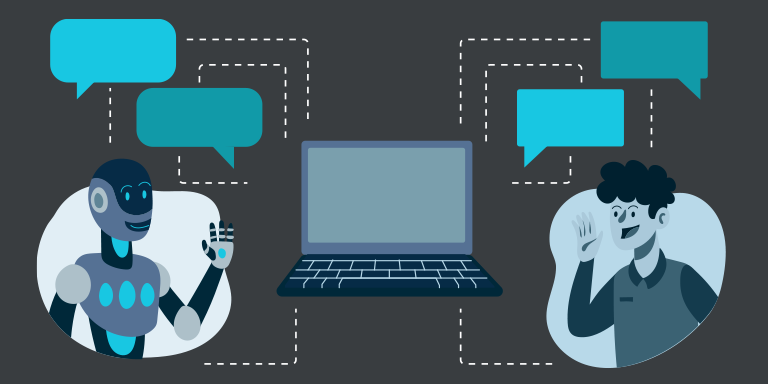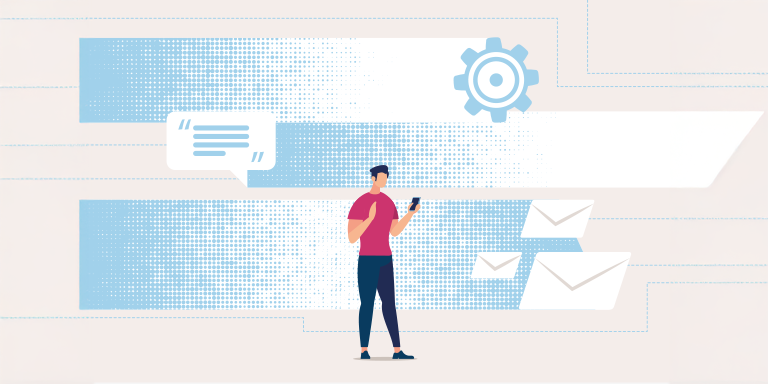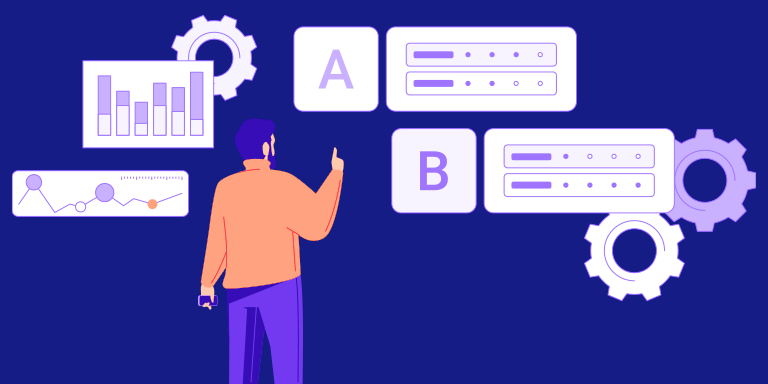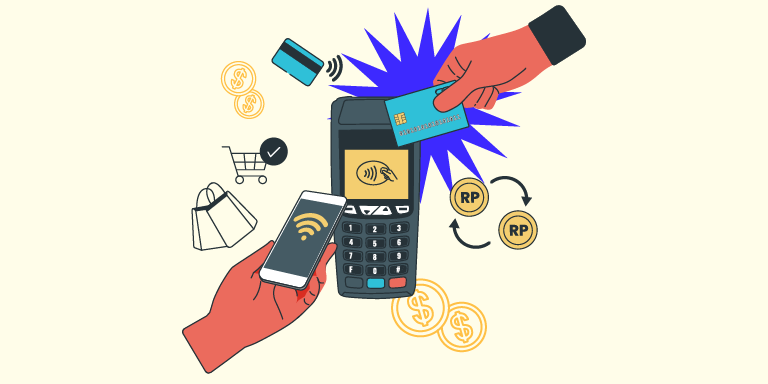Implementing AI in customer service can transform how businesses interact with their customers by enhancing efficiency, personalization, and scalability.
There are a multitude of different AI strategies you can use, from chatbots for instant responses, sentiment analysis for emotional insight, data analytics for actionable insights, predictive support, and personalization engines – AI offers practical ways to improve customer satisfaction and streamline support efforts.
Key Takeaways
- Starting with one or two AI tools can help you see measurable benefits quickly while gradually integrating additional AI capabilities will continue to improve your customer service operations.
- Using AI solutions, businesses can meet customer expectations for fast and proactive services, ultimately setting themselves apart in a competitive landscape.
- Using AI-driven data has proven to enhance the customer journey through personalization and support tools.
8 Ways You Can Implement AI to Improve Customer Service
1. Use AI Chatbots for Instant Customer Support
Chatbots are one of the most effective and accessible AI tools for customer service, significantly reducing response times. Businesses can benefit from efficiency by deflecting simple inquiries to ChatGPT-powered bots. Studies show that 64% of consumers and 80% of business buyers expect businesses to respond and interact with them in real time. Bots can provide quick answers to common questions 24/7, allowing staff members to deal with more important or complicated issues.
In addition to simple query handling, modern AI chatbots are evolving into intelligent virtual agents that can guide customers through complex processes like troubleshooting, onboarding, and even personalized recommendations. These advanced systems learn from past conversations, adapt to user behavior, and escalate only when truly necessary, offering a seamless blend of automation and human-like understanding.
Benefits:
- Reduces response times, providing customers with immediate answers – Businesses that use AI chatbots see 30% reduction in response-time, according to IBM.
- Minimizes the workload on staff, allowing them to prioritize complex cases.
- Maintains consistent responses across multiple channels (website, app, social media)
Implementation Steps:
- Define Frequently Asked Questions: Identify the top questions your customers ask and program the chatbot to respond to these efficiently.
- Integrate with Your CRM: Connect the chatbot to your Customer Relationship Management (CRM) system so it can access customer history and personalize responses.
- Set Up Escalation Protocols: Design the bot to recognize when a query needs a human touch and seamlessly hand it off to an available agent.
Clothing brand H&M uses an AI-powered chatbot on its website and social media to help customers find products, check availability, and manage returns. By handling common queries, the chatbot reduces the load on customer support and improves response times significantly.
2. Implement AI-Driven Sentiment Analysis for Personalized Interactions
ChatGPT’s natural language processing (NLP) capabilities or AI-based sentiment analysis tools allow customer service teams to gauge the emotional tone of customer interactions, whether it’s through live chat, emails, or social media, helping staff to understand the customer’s mood and urgency level. You can read more about social listening here.
This insight allows support teams to prioritize cases effectively and tailor responses based on the customer’s emotional state, leading to more empathetic and satisfying interactions. This information helps businesses make data-driven decisions about where to improve products, services, or customer support processes.
AI-powered sentiment analysis goes beyond keyword detection. It evaluates tone, urgency, and intent across channels to help support teams respond more empathetically and in real time. This not only prioritizes at-risk conversations for faster handling, but also gives leaders better visibility into recurring customer frustrations that might not show up in traditional feedback metrics.
Companies using AI-based sentiment analysis experience a 25% reduction in customer complaints and a 10% increase in customer satisfaction scores.
Benefits:
- Provides actionable insights into customer satisfaction and recurring issues.
- Enables proactive improvements in products and services based on customer feedback.
- Helps management recognize areas where agents may need additional training.
Implementation Steps:
- Set up regular reports from ChatGPT that summarize sentiment trends and recurring themes in customer interactions, providing valuable insights for decision-makers.
- Choose a Sentiment Analysis Tool: Look for AI tools that integrate with your existing channels, such as Zendesk’s AI capabilities or third-party APIs like IBM Watson or Google Cloud’s Natural Language API.
- Train the AI on Your Specific Customer Data: Improve accuracy by feeding the tool data specific to your industry and customer base.
- Develop Protocols for High-Priority Cases: Use sentiment analysis to flag cases that need immediate attention or a specialized approach, ensuring a rapid and effective response.
Coca-Cola uses AI sentiment analysis to track customer feedback in real-time, allowing them to adjust marketing strategies and customer support responses based on trending sentiment.
As a result, they have seen an 18% improvement in brand perception scores by proactively addressing issues that surfaced through sentiment analysis.
3. Use AI-Powered Data Analytics for Customer Insights
AI-based data analytics tools help businesses analyze vast amounts of customer data to identify trends, preferences, and potential pain points. If you want to know more about how to use customer insights to drive business growth, read this!
This deep understanding enables companies to make informed decisions about how to improve their service and tailor their offerings. AI can uncover patterns that may not be obvious, such as the most common times customers contact support or recurring issues with specific products.
Implementation Steps:
- Identify Key Metrics and Data Sources: Decide which customer metrics (e.g., customer satisfaction scores, response times) and data sources (e.g., social media, feedback forms) you want to analyze.
- Automate Data Collection and Analysis: Use tools like Salesforce’s Einstein Analytics or Google Analytics with AI capabilities to automate data collection and pattern recognition.
- Generate Actionable Reports: Set up your AI tool to produce regular reports that summarize insights and recommend specific improvements.
Sephora uses AI-driven analytics to gather insights from customer feedback on products and in-store experiences, allowing the company to make targeted improvements that enhance customer satisfaction.
4. Empower Human Agents with AI Support Tools
While AI can automate many customer interactions, its greatest value often comes from enhancing human performance. AI support tools act as real-time assistants to agents, surfacing relevant help articles, recommending answers, and summarizing past interactions as the conversation unfolds. This lets agents focus on nuanced, relationship-building tasks instead of digging through databases or past tickets.
Benefits:
-
Improves accuracy and response time without overloading agents
-
Helps new hires ramp up faster by offering in-the-moment suggestions
-
Reduces repeat questions by surfacing context instantly
Implementation Steps:
-
Choose an AI platform that integrates with your service desk or CRM
-
Enable real-time prompts and auto-suggestions for common issues
-
Train agents to balance AI input with their own judgment and voice
5. Leverage AI for Predictive Customer Support
Predictive customer support uses AI to anticipate customer needs and proactively address potential issues before they escalate. For example, if a customer has repeatedly contacted support about a particular product issue, AI can identify this pattern and trigger a follow-up or suggest a solution even before the customer reaches out again.
Generative AI can be a fantastic tool when used properly, allowing your business to scale. If you want 5 top-tips on how to use AI to scale your business, look no further! Predictive support can reduce frustration, build trust, and create a more seamless service experience. Gartner predicts that by 2025, 75% of customer service interactions will be powered by AI, significantly decreasing the burden on human agents.
Implementation Steps:
- Train AI on Historical Data: Use past interactions, purchase history, and common issues to teach the AI system to recognize triggers that indicate a future support need.
- Set Up Alerts for Customer Support Teams: When the AI detects a potential issue, it can alert agents to initiate contact with the customer, offering assistance proactively.
- Refine the System Continuously: Update the AI model based on new data and customer feedback to improve accuracy over time. As your prompt engineering improves, so too will your output.
AI-powered systems can now proactively spot issues customers might not even know they’re experiencing, such as service degradation, expired warranties, or missed messages, and initiate outreach to resolve them. This shifts support from reactive problem-solving to preventive care, which can dramatically improve trust and retention.
Comcast uses predictive analytics to identify and solve connectivity issues before they affect customers, often resolving problems without any interruption to service. This proactive support approach reduces customer calls and improves overall satisfaction.
6. Enhance Customer Experience with AI-Powered Personalization Engines
Personalized experiences are critical to modern customer service, and AI-powered personalization engines enable companies to offer each customer a uniquely tailored experience. By analyzing purchase history, browsing behavior, and customer preferences, AI can recommend relevant products, customize responses, and anticipate customer needs. This level of personalization can make customers feel valued and understood, leading to higher satisfaction and loyalty.
With access to customer data, ChatGPT can tailor responses to individual customers, enhancing the personalization of each interaction. By using data such as purchase history, previous interactions, or stated preferences, ChatGPT can recommend products, provide customized solutions, and address customers by name or with specific information relevant to their history with the company. McKinsey reports that personalization can lead to 5 – 15% revenue growth and improve the efficiency of marketing spend by 10 – 30%.
Benefits:
- Creates a personalized experience that helps build customer loyalty.
- Increases the likelihood of cross-selling or up-selling relevant products.
- Helps customers feel valued and understood, improving satisfaction
Implementation Steps:
- Ensure that ChatGPT integrates securely with CRM or customer data platforms so it can access the relevant information needed for personalized interactions.
- Collect and Organize Customer Data: Use customer profiles, previous purchases, and preferences to inform the personalization engine.
- Integrate with CRM and Marketing Platforms: Connect your personalization engine with other systems to ensure a seamless, cohesive experience across all customer touchpoints.
- Optimize Based on Feedback: Use customer feedback to refine recommendations and further customize the personalization experience.
Netflix utilizes AI to recommend shows and movies to each user based on their past viewing habits, creating a highly personalized experience that keeps users engaged. In a customer service setting, this approach could apply to suggesting relevant support resources, product upgrades, or loyalty rewards.
Using Chatgpt and other AI tools in customer service offers businesses the opportunity to support their team rather than replace it. Whether it’s automating responses, helping to personalize interactions, conducting follow-ups, or analyzing sentiment, AI enables companies to streamline processes, boost response times, and understand their customers better. With staff and AI working in harmony, it opens up opportunities for growth, scale and increased brand reputation.
However, successful AI implementation depends not just on the technology, but also on the readiness of your team. Clear processes, ongoing training, and trust in the system are essential. When AI is positioned as a co-pilot, supporting rather than replacing your agents, it drives employee satisfaction and customer loyalty.
If you’re looking for more information on the power of AI or you need a business coach, look no further than Foundr+. When you sign up for just $1, you will receive instant access to 30+ courses and 1,000+ lessons led by top experts. Get support, motivation, and advice whenever you need it. Sign up here.
FAQs:
How Can AI-Powered Chatbots Enhance Customer Support Efficiency?
AI-powered chatbots significantly improve customer service efficiency by handling high volumes of routine inquiries instantly, which reduces response times and ensures customers receive timely help. Chatbots can be programmed to answer common questions, such as those related to store hours, order status, return policies, and product information. This automation frees human agents to focus on complex or high-value inquiries, increasing overall productivity.
What Role Does AI Play in Personalizing Customer Interactions?
AI personalizes customer interactions by analyzing data such as browsing behavior, purchase history, and previous support interactions. Using this information, AI can tailor responses, offer relevant product recommendations, and anticipate customer needs, creating a more engaging and meaningful experience.
What Are the Best Ways to Integrate AI with Human Customer Service Teams?
AI can work alongside human agents by providing real-time support during customer interactions. AI tools can suggest responses, retrieve relevant information, and summarize past interactions, allowing agents to provide faster and more accurate support. This integration enhances agent performance while preserving the human touch, which is crucial for handling complex or sensitive issues.
















